The bald eagle, with its iconic white head and powerful beak, is a symbol of strength and freedom in the United States. Recognizable and majestic, it’s not uncommon for bird enthusiasts to wonder if there are other species that share a resemblance with this regal bird of prey.
Indeed, nature is full of remarkable avian look-alikes, some of which might surprise you with their similarities to the bald eagle. So, what birds look like bald eagles?
In this exploration of birds that resemble bald eagles, we’ll delve into various species from different parts of the world that exhibit characteristics reminiscent of the bald eagle’s distinctive appearance.
From their impressive size to their striking plumage, these birds have their own unique features, yet they evoke the same awe and wonder that the bald eagle does. Let’s take flight into the world of avian doppelgängers and discover these magnificent birds.
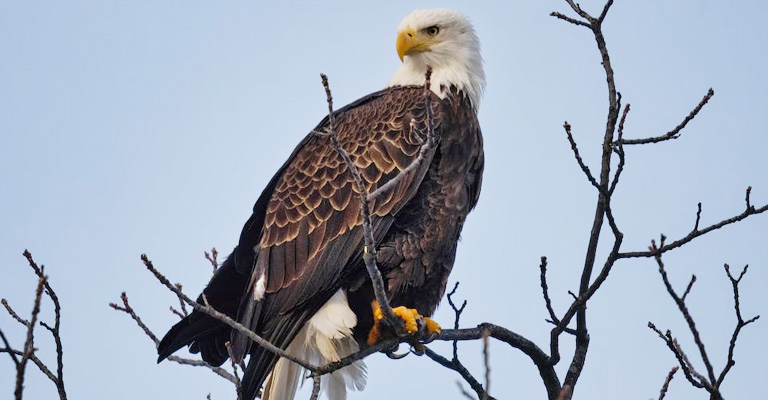
What Birds Look Like Bald Eagles?
While the bald eagle holds a unique and iconic status, several bird species across the globe share resemblances with this magnificent bird of prey. Here are some examples you need to know about:
African Fish Eagle (Haliaeetus vocifer)
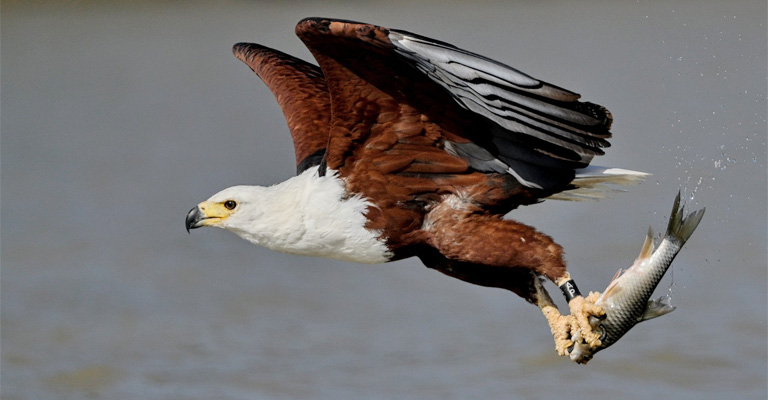
The African fish eagle, Haliaeetus vocifer, is often referred to as the “African cousin” of the bald eagle due to its striking similarity in appearance. Found in sub-Saharan Africa, this magnificent raptor is renowned for its distinctive features, which bear a close resemblance to the bald eagle.
Appearance
One of the most notable similarities between the African fish eagle and the bald eagle is their striking white head.
The African fish eagle, like its North American counterpart, exhibits a prominent white crown and neck, contrasting sharply with its dark brown body.
This white head and neck give it a regal and imposing appearance that echoes the bald eagle’s iconic look.
Habitat and Behavior
African fish eagles are predominantly found near freshwater bodies such as rivers, lakes, and wetlands. Their primary diet consists of fish, and they are skilled at hunting from perches near water, much like bald eagles.
Their distinctive call, a loud and evocative cry, is a characteristic sound often associated with African wilderness.
White-tailed Eagle (Haliaeetus albicilla)
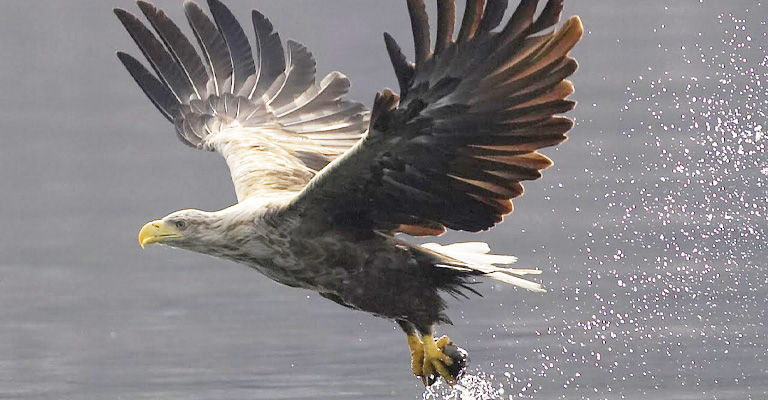
The white-tailed eagle, Haliaeetus albicilla, is another species that shares remarkable visual similarities with the bald eagle. This bird of prey is found in various parts of Europe and Asia and is sometimes referred to as the “sea eagle.”
Appearance
What sets the white-tailed eagle apart is its large size and distinctive plumage. Like the bald eagle, it features a snowy-white tail, which stands out prominently against its dark brown body.
The similarity in plumage, especially the whitetail, contributes to its association with the bald eagle. However, the white-tailed eagle is even larger than its American counterpart, with a wingspan that can exceed eight feet.
Habitat and Behavior
White-tailed eagles prefer coastal habitats and large bodies of water, where they hunt for fish and waterfowl. Much like bald eagles, they have a preference for perching in trees near water and employ a similar hunting strategy.
These eagles have made remarkable comebacks in some regions after facing severe population declines due to habitat loss and hunting.
Steller’s Sea Eagle (Haliaeetus pelagicus)
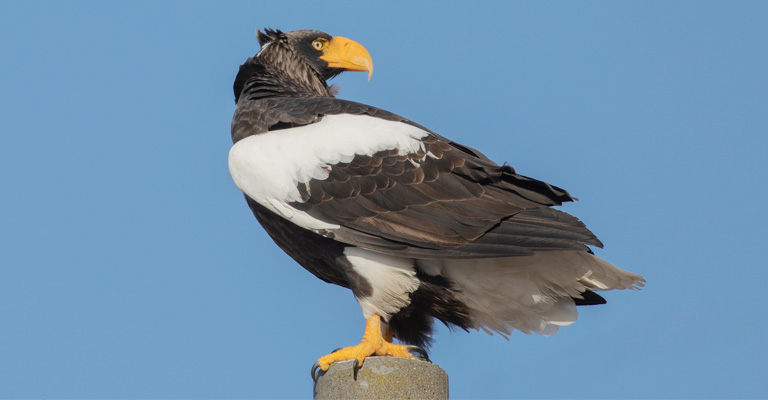
If you’re searching for a bird of prey that exudes a sense of power and grandeur comparable to the bald eagle, look no further than the Steller’s sea eagle, Haliaeetus pelagicus.
This formidable bird is the largest of all sea eagles and resides in northeastern Asia, particularly in Russia and Japan.
Appearance
Steller’s sea eagles share some remarkable resemblances with bald eagles, notably in their appearance. They possess a similar stark contrast between their white head and tail and their dark brown body.
However, the Steller’s sea eagle is even more massive, with a wingspan that can reach up to 8.2 feet (2.5 meters), making it one of the largest eagles in the world.
Habitat and Behavior
These eagles are true masters of their coastal domains, primarily inhabiting the coastlines of Russia and parts of Japan. They are powerful hunters, preying on fish and water birds, much like the bald eagle.
Their impressive size and imposing presence make them an awe-inspiring sight for anyone lucky enough to witness them in the wild.
Australian Sea Eagle (Haliaeetus leucogaster)
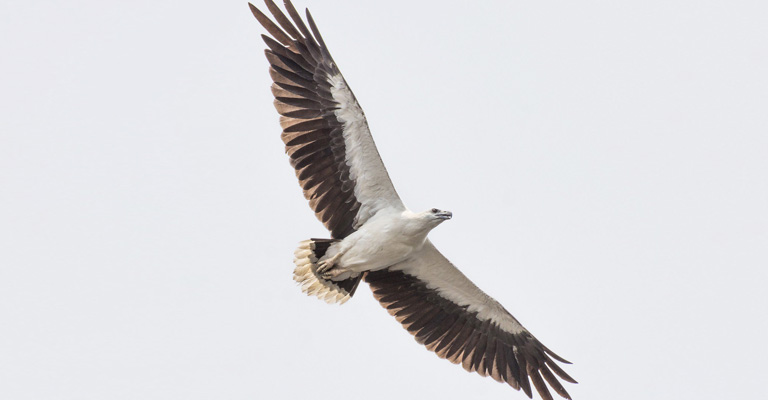
The Australian sea eagle, Haliaeetus leucogaster, is the largest bird of prey in Australia and is often referred to as the “white-bellied sea eagle.” While its coloration differs slightly from the bald eagle, its size and habitat preferences contribute to its inclusion on this list.
Appearance
The Australian sea eagle is distinguished by its white head and white underparts, contrasting with its dark brown wings and back. While the bald eagle showcases a white head and neck, the Australian sea eagle displays a more extensive white underbelly.
This characteristic plumage, combined with its impressive size, creates an eagle that captures the attention of onlookers.
Habitat and Behavior
These eagles are commonly found along the coastlines and inland bodies of water in Australia, where they hunt for fish and other aquatic prey.
Their hunting strategy often involves soaring above water and swooping down to snatch fish from the surface, resembling the bald eagle’s hunting technique.
Philippine Eagle (Pithecophaga jefferyi)
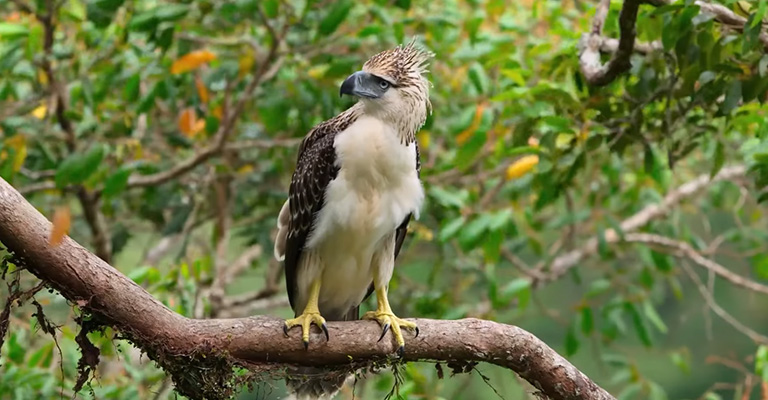
The Philippine eagle, also known as the monkey-eating eagle, is a critically endangered species native to the Philippines.
While its appearance differs significantly from the bald eagle, it earns a place on this list due to its impressive size and status as a rare and emblematic raptor.
Appearance
The Philippine eagle has a unique and striking appearance. Unlike the bald eagle, it doesn’t have a white head. Instead, it possesses a crest of long, shaggy feathers on its head, which gives it a distinctive and regal look.
It has a dark brown body and a prominent beak. Although not a close visual match to the bald eagle, the Philippine eagle shares the quality of being a large and majestic raptor.
Habitat and Behavior
These eagles inhabit the forests of the Philippines, particularly in mountainous regions. Their primary prey consists of various animals, including monkeys, which has led to their colloquial name.
The Philippine eagle’s striking appearance and rarity have made it a symbol of conservation efforts in the Philippines.
How Do You Recognize a Bald Eagle?
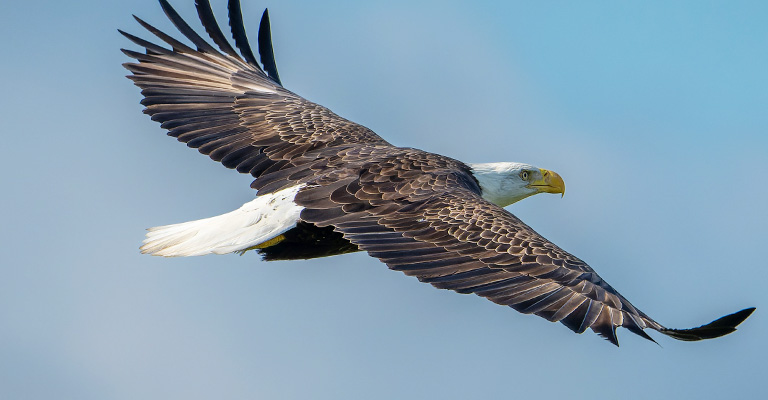
Distinguishing a bald eagle from other birds of prey is relatively straightforward when considering its unique characteristics, behavior, and habitat. Here’s how to recognize a bald eagle:
Distinctive Plumage
The most prominent feature of a bald eagle is its striking plumage. Adult bald eagles are primarily known for their white head, neck, and tail. This stark white head stands out in sharp contrast to the rest of their dark brown body.
The name “bald” eagle is derived from the old English word “balde,” meaning white, not from the absence of feathers on the head.
Size and Shape
Bald eagles are large raptors, and their size is another key identifying characteristic. They have a wingspan that can range from 6 to 7.5 feet (1.8 to 2.3 meters), making them one of the largest birds of prey in North America.
When in flight, their wings are broad and long, and their bodies appear hefty and substantial.
Beak and Eyes
The beak of a bald eagle is large, strong, and sharply curved at the tip. It is primarily yellow, with a dark-colored hook. Their eyes are another distinguishing feature; they have bright yellow irises, which give them a keen and intense look.
Behavior
Bald eagles are often spotted near large bodies of water, such as rivers, lakes, and coastal areas. They are skilled fishers and are known for their impressive hunting technique, which involves swooping down from perches to catch fish with their talons.
Their fishing behavior often includes a characteristic low flight over the water, followed by a sudden and agile dive to snatch their prey.
Vocalizations
Bald eagles are not known for their vocalizations, but they do produce certain sounds. Their calls include a series of high-pitched and whistling notes, often heard during interactions with other eagles or when they are near their nest.
These calls are distinct from the more powerful and piercing calls of other raptors, like the red-tailed hawk.
Habitat
Bald eagles are commonly associated with large bodies of water, which provide their primary food source – fish. They are often found near coastlines, rivers, lakes, and reservoirs.
Additionally, they inhabit forested areas adjacent to these water bodies, where they build their nests in tall trees or on cliffs. Bald eagles tend to return to the same nesting sites year after year.
Age Matters
Young bald eagles have a different appearance compared to adults. Immature bald eagles do not have the distinctive white head and tail.
Instead, they have brown plumage all over their body. The white head and tail feathers gradually appear as they mature, typically taking several years to reach full adult plumage.
Range
Bald eagles are native to North America and are found throughout the continent. They have a diverse range that spans from Mexico to Alaska and from the Atlantic to the Pacific coasts.
The concentration of bald eagles can vary seasonally, with more birds present during the winter months in some regions.
FAQs
How can I distinguish between a bald eagle and a golden eagle?
Distinguishing between a bald eagle and a golden eagle can be challenging, but some key differences help. Bald eagles have a white head and tail, while golden eagles are brown with occasional gold patches on the back of their necks.
What is the significance of the bald eagle’s white head and tail?
The bald eagle’s white head and tail serve as a distinctive feature, symbolizing maturity and adulthood. Young bald eagles have all-brown plumage, and as they age, they gradually acquire the iconic white head and tail feathers, which indicate their maturity.
Are there other raptors that have a white head and tail like the bald eagle?
While a completely white head and tail are unique to the bald eagle, some other raptors exhibit partial white plumage. For example, ospreys have a white head and dark eye stripes but lack a white tail.
Do bald eagles only eat fish?
Although fish make up a significant portion of their diet, bald eagles are opportunistic feeders and will consume a variety of prey. They may also eat birds, small mammals, carrion, and scavenged food.
Can I find bald eagles in urban or suburban areas?
Bald eagles are primarily associated with large bodies of water and forests. While they can adapt to some degree, urban and suburban areas are not their typical habitats.
Conclusion
In the realm of birds that resemble the majestic bald eagle, we’ve uncovered a fascinating array of avian counterparts.
From the African fish eagle’s regal white head to the impressive Steller’s sea eagle with its imposing size, these birds captivate our imaginations with their striking features.
While these look-alikes might not carry the same symbolic weight as the bald eagle, they contribute to the rich tapestry of avian diversity around the globe. Each species has adapted to its unique environment and carved out its niche in the natural world.
It’s a testament to the power of evolution and adaptation, resulting in birds that, while distinct, still evoke the same sense of wonder and admiration as the bald eagle.
As we continue to observe and protect these magnificent creatures, we celebrate their beauty and complexity.